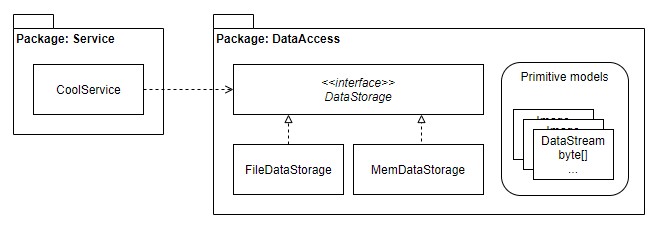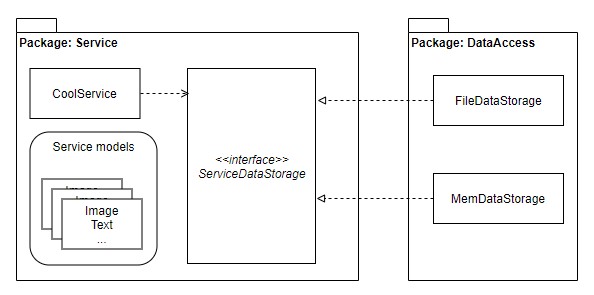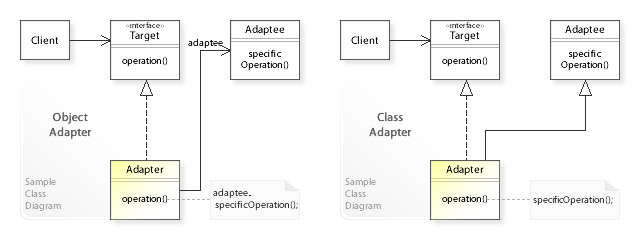Dependency Inversion
Concepts
Taking from Why Inverse Dependency:
- Reversing the direction of interface ownership: “lower level” components are dependent upon the interfaces owned by the “higher level” components
- The ownership of interface is shifted to more valuable components (higher level)
- The “high level” components define the interface (
INeedSomething), “low level” components implement it- Contrast to traditional: “low level” components define the interface (
IDoSomething)
- Contrast to traditional: “low level” components define the interface (
Shouldn’t be confused with abstraction and decoupling.
Example
Traditional dependency direction

Here we see the DataStorage interface may define some methods like:
interface DataStorage {
byte[] GetBytes(string dataName);
DataStream GetStream(string dataName);
}
Basically, the “low level” component (DataAccess) defines the interface, data structure (IDoSomething)
The “high level” component (Service) uses (and depends) on this defined contract.
Inversed dependency direction

Here we see the “high level” component (Service) defines the interface ServiceDataStorage:
interface ServiceDataStorage {
Image GetImage(string dataName);
Text GetText(string dataName);
}
The “low level” component (DataAccess) implements the detail, follow the contract provided by high level.
This actually means: the Service need something, the DataAccess has to fulfil that need.
Hence, reversing the dependency.
Comparison
Key notes:
- The value and role of component:
- Tradition: Low level component is more important, it defines the behavior which is barely changed. It’s in the center that other app use it.
- Inversed: The high level component is more important, it defines the behavior. Others need to provide stuffs around it.
- Who owns the contract is the center, most important.
- Reusability:
- Tradition: the low level component can be reused in other app (other services) since it provide primitive operation. E.g. when you build a util library.
- Inversed: the high level component can be reused in other app (difference data access mechanism). E.g. when you build a business app that has core logic, but with replacable detail (Web UI, Console UI, SQL db, noSQL db…)
Uncle Bob’s Clean Architecture
Clean Architecture promoted by Uncle Bob is an example of reversing the dependency: Detail explanation
Bonus: vs Adapter pattern
Adapter pattern looks similar to reverse dependency.

Here we can see the interface Target is defined, and the detail Adapter implements it utilize some detail
provided by Adaptee
Looks similar, but again, the direction of dependency is based on who owns the contract.
If Client (high level) defined the Target interface, then it’s reversed dependency.
If Adapter (low level) defined the Target interface, then it’s just tradition dependency, since the behavior is defined by the low level, high level component has to rely on it.